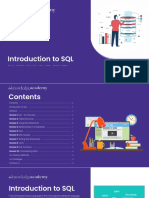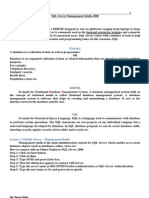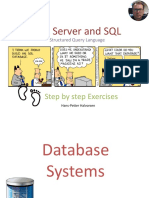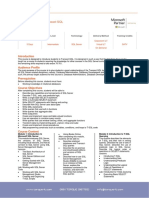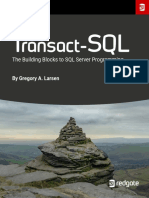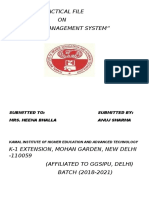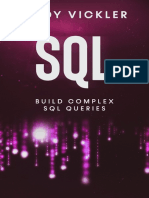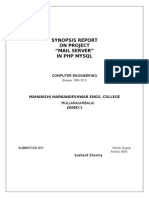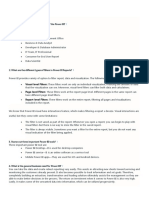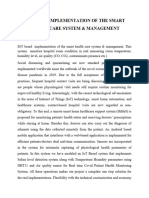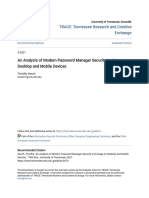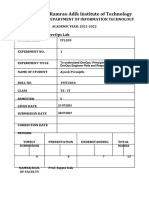0% found this document useful (0 votes)
18 views4 pagesIntroduction To SQL - GoSkills Course Syllabus
This document provides an introduction to SQL course syllabus that includes 33 lessons over 16.5 hours. The course is aimed at beginners and does not require any prerequisites. It covers topics such as intro to databases and SQL, installing and using Microsoft SQL Server and SQL Server Management Studio, creating and managing databases and tables, inserting, updating, deleting and filtering data using SQL statements like SELECT, WHERE, and JOIN, and other concepts like functions, indexing, and primary keys. The instructor is listed as John Elder and the estimated study time is provided to complete all materials.
Uploaded by
Rāč HįdCopyright
© © All Rights Reserved
We take content rights seriously. If you suspect this is your content, claim it here.
Available Formats
Download as PDF, TXT or read online on Scribd
0% found this document useful (0 votes)
18 views4 pagesIntroduction To SQL - GoSkills Course Syllabus
This document provides an introduction to SQL course syllabus that includes 33 lessons over 16.5 hours. The course is aimed at beginners and does not require any prerequisites. It covers topics such as intro to databases and SQL, installing and using Microsoft SQL Server and SQL Server Management Studio, creating and managing databases and tables, inserting, updating, deleting and filtering data using SQL statements like SELECT, WHERE, and JOIN, and other concepts like functions, indexing, and primary keys. The instructor is listed as John Elder and the estimated study time is provided to complete all materials.
Uploaded by
Rāč HįdCopyright
© © All Rights Reserved
We take content rights seriously. If you suspect this is your content, claim it here.
Available Formats
Download as PDF, TXT or read online on Scribd
/ 4







